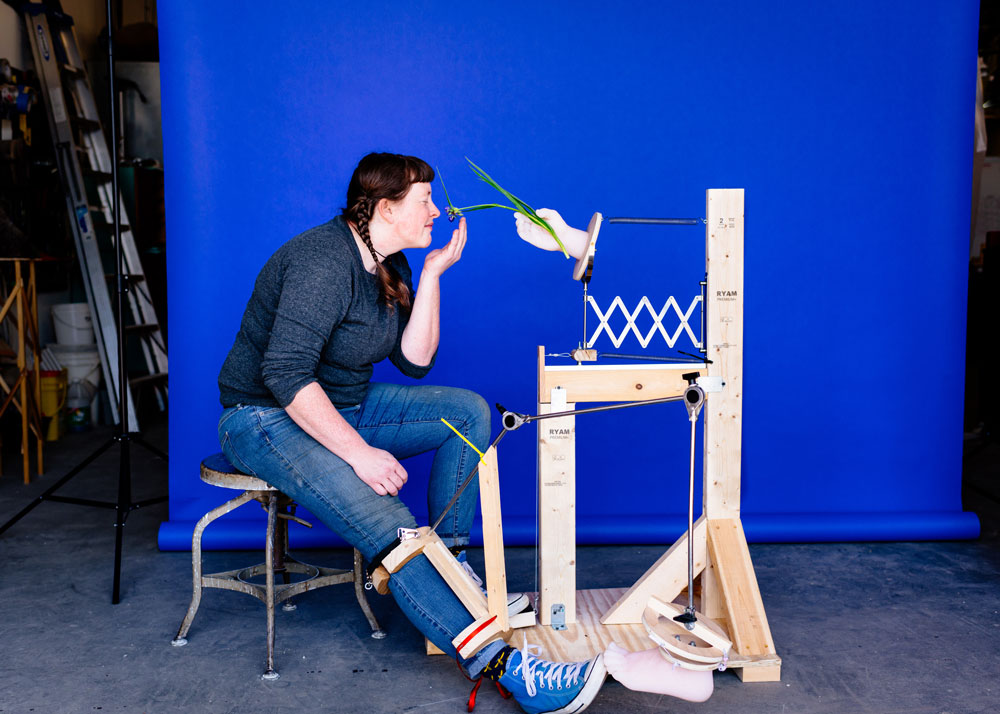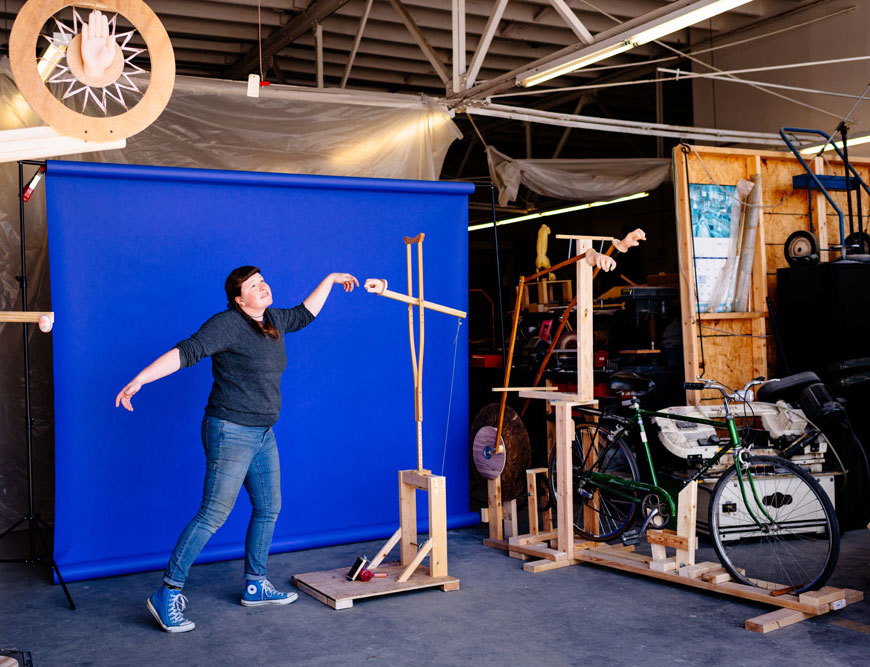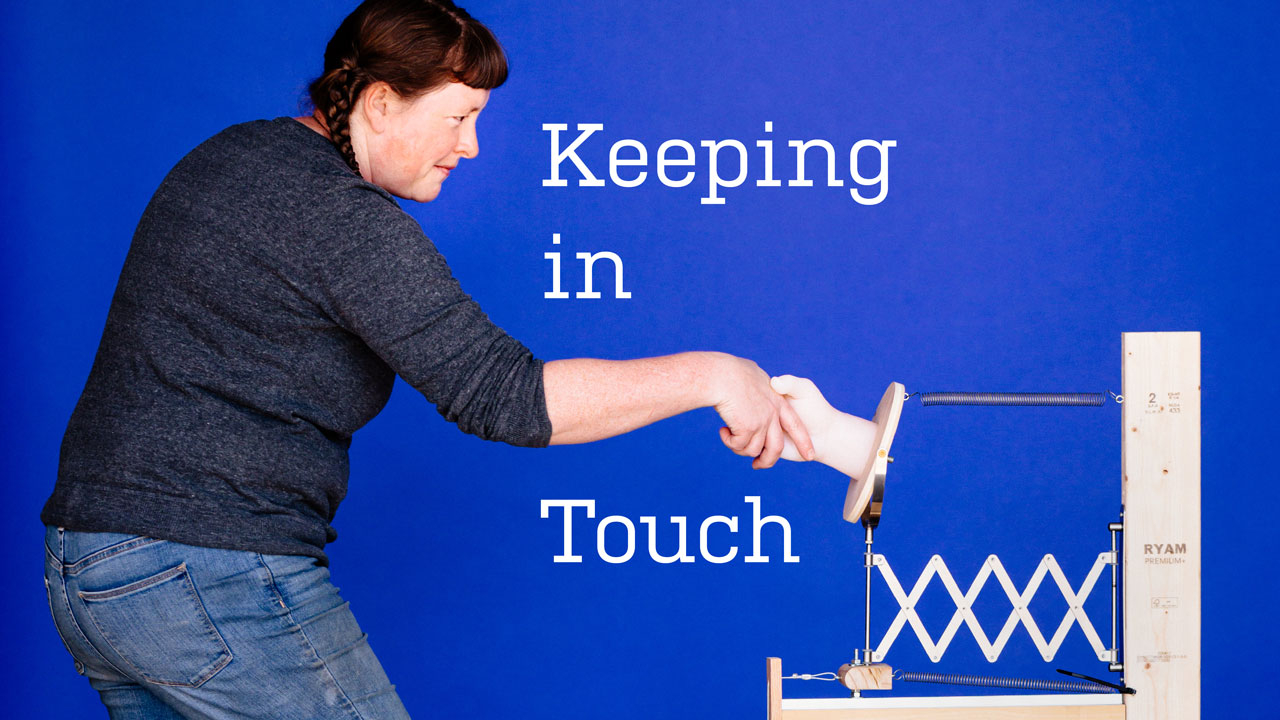Even in isolation, Stacey Holloway can hold a hand, receive a swift kiss on the cheek, or give a high five. She can offer a nose rub, just like the ones she shares with her mother. She just does them all alone—that is, if you don’t count the kinetic, prosthetic models she created to help.
Holloway is an assistant professor of sculpture in the UAB College of Arts and Sciences Department of Art and Art History, where she teaches 3-D design, metal casting and fabrication, contemporary woodworking, and beginning to advanced sculpture. She had created multiperson wearable prosthetics in the past, so when the coronavirus pandemic began, she wondered how a similar idea would work within the context of social-distancing practices and isolation.

“For these pieces, I pour patterns in a flexible, high-performance silicone rubber that’s made to mimic skin for cinematic special effects or for medical prosthetics,” Holloway says. She then showcases these fake noses, hands, and more in what she calls “interactive contraptions,” which she builds using her woodworking skills and everyday items from her home or studio. No object is too old, too strange, or too basic to consider.
To mimic mom’s affectionate nose rubs, for example, Holloway used a doorstop as a spring and a plumb bob as a counterweight. She rigged the accordion body of a collapsing IKEA wall mirror to a series of springs and pulleys to simulate a simple friendly handshake (pictured at top). Two old belts now secure a device that replicates the action of holding hands.
“I’ve made ‘a kiss on a cheek,’ where I used an old record player and lipstick to mimic the often aggressive, yet loving greeting of a grandmother,” Holloway says. For her high five, “I created a trampoline effect with rubber bands to replicate the congratulatory interaction between teammates. These are all meant to be playful and immediate, so I’m approaching each piece section by section until I simulate the interaction I want.”
“I hope the humor and process of this body of work will inspire our community to stay mentally positive during our current situation and will hopefully influence others to find creative outlets to fill their time of solitude and keep finding ways to safely communicate with one another,” Holloway explains.




